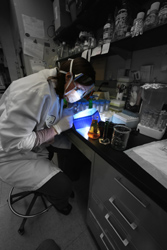Key regions mapped for bowel disease genes
The development of inflammatory bowel disease (IBD) is due to a complex mix of modern lifestyle environmental influences combined with a genetic predisposition. Linkage studies have indicated a polygenic basis with markers identified on chromosomes 6, 12 and 16. Characterisation of the genetic basis for the ailment would help to simplify the diagnosis of the disease. The EU funded project GENETICS OF IBD aimed to further elucidate the genetic basis of the disease. Specifically, scientists at the Panum Institute, part of the University of Copenhagen, used cytogenetically based techniques to map genes linked with IBD. Well-established mapping methods involving disease-associated balanced chromosome rearrangements (DBCRs) were harnessed to identify potential susceptibility loci. When chromosome pieces move position to another chromosome or invert within the same chromosome, they potentially inactivate a gene at the breakpoint. Using this principle together with the Mendelian Cytogenetics Network and other human genome project databases, the scientists identified several breakpoints where loci were potentially associated with IBD susceptibility. To map the breakpoints found with potential IBD genes, genomic techniques were employed. Fluorescent in situ hybridisation (FISH) was used along with more than 80 bacterial artificial chromosomes (BACs). The bacterial constructs were used to amplify the relevant regions of DNA. Also, further verification for IBD associated genes at one breakpoint was sought using haplotype association testing. The use of conventional cytogenetic techniques married with state of the art genomics and proteomics has helped to identify the genetic status of this complex disease. Further research is required to map and characterise genes and unidentified messenger RNA revealed by this research. By validation of genes associated with this complex disease, novel targets for therapeutic purposes and screening tools can be identified.







